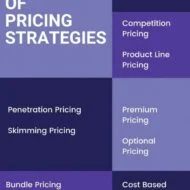Posted by Managementguru in Business Management, Marketing, Principles of Management
on Mar 4th, 2014 | 0 comments

Price Discrimination is nothing but a pricing strategy that charges customers different prices for the same product or service. Price discrimination is adopted by most of the firms in order to group their customers into different segments and fix different prices for each segment for identical products and services. This helps them to increase their revenue as well to cater to the needs of different customer groups. The negative aspect of this exercise is increased administrative costs in segmenting the markets and some people end up paying higher costs. But it has to be remembered that by discriminating prices, firms are able to cut through and exploit all layers of the market, helping them to expand. Elasticity of Demand Price discrimination can be practiced by a firm only which has some control over the price. Backgroung Image Source: Image by Gerd Altmann from Pixabay Obviously a price taker cannot indulge himself in price discrimination. It must be possible to group different markets in terms of price elasticity of demand. Suppose a firm identifies two potential markets, fixes high price for one market and low for another, caution is the key word in that, both the markets should be separable. Otherwise there is the danger of purchasing a product in one market for a lower price and the same being resold in another at a higher price. It might damage the market reputation of the firm as well. Skimming the Profit The process of price discrimination is followed by most of the firms existing in monopolistic and oligopolistic markets, where there is a necessity to exploit potential customers at the earliest in order to skim the profit. Premium customers are targeted first, followed by middle income group and then lower income group. Recent marketing strategies allow middle and lower income group to enjoy all the material comforts and luxuries available for the premium class, by arranging for loans to be settled in equated monthly installments over a period of time. The firms are also engaged in associating themselves with financial institutions and banks, which proves to be a win-win situation for both. Following are some examples cited for your understanding about price discrimination: In legal and medical professions, charging of lower fees to the low income than to high income group.Charging of lower prices abroad than at home for a variety of products and services ranging from books and medicines to movies.Charging of lower prices for elders and children in public transportation and airlines.Charging of lower hotel rates for conventions and meetings.Electronic industry, where the price set initially is high and then it falls down gradually. Firms believe that by offering different prices to different customer groups, can retain the customers and prevent them from switching over to another supplier. Travel agencies offer fanciful package tours with attractive and competent prices that are irresistible. Such is the power of marketing when presented in the right mix targeting the right customers at the right...

Posted by Managementguru in Financial Management, Project Management
on Feb 25th, 2014 | 0 comments

What is Budget Planning and Why is it Important? Quantification of Objectives in the form of Budgets Effective and efficient management of a business enterprise is facilitated, when a firm charts its course of action in advance. The management function also includes decision-making supported by various managerial techniques and tools that integrate the activities of the employees of the organization. One such technique is having a budget planned that which is essential for a healthy future. The systematic approach to profit planning is budgeting. The prime concern of budgeting is to make profits by regulating the flow of funds and allocating the controlling function to various responsibility centers. Don’t know how to start budget planning ? Do you need to know how to make a budget ? This infographic will provide personal budget categories you can use to help you categorize expenses for budgeting purpose. This may or will save you time, money, and effort. Getting Your Budget Approved What is a Budget? A budget is a comprehensive and coordinated financial plan, charted for a specific period of time in the future, but well in advance. It facilitates to compare the actuals with the standards established and review or revise the plans accordingly in case of any deviations or variances. A budget is a plan that is concerned not only about the resources of a firm, but also its operations. It involves the control and manipulation of relevant variables-controllable and non-controllable, and reduces the impact of uncertainty. Economic Constraints in Developing Countries Problems of unemployment, inflation and crude oil prices touching a dangerous high, these countries can offer only piecemeal measures to sustain the momentum of economic growth. Pic Courtesy: Avail Talking about organizations going for the master budget at the start of the year, it comprises budgets for various segments of the enterprise and it forms the primary step in budget planning. Master Budget The budget for a segment or department will not have much significance unless it is a part of the total budget-the master budget. If the budgets for various segments are not prepared jointly and in harmony with each other, the master budget will lose much of its importance and may even prove to be harmful in realizing the firm’s expectations. A budget is always expressed in financial terms, either in rupees, dollars or pounds, for operational purposes. Say, in a production budget, you talk about units of raw material and finished product. In a labor budget, you talk about men and labor hours. So there must be a common denominator, which can express all these variable quantities in a common language for the comprehensive budget to be meaningful. This purpose is solved by money, which undoubtedly serves as the common denominator. Budget Mechanism A budget is a mechanism to plan for the firm’s operations and activities. It allocates resources as well as responsibilities to different operational centers like, revenue, cost, profit and investment centres. Time dimension must also be added to a budget. For example, a production target of ten thousand units or a profit target of ten million dollars has no meaning unless and until it is related to a specific time period, in which these targets have to be met. A firm may have its long-range and broad objectives, such as maximum sales, maximum profits, customer satisfaction, social responsibilities, etc., But, to achieve these qualitative objectives, a firm has to quantify the same in the form of short-term objectives or goals with a time period precisely specified. A budget is basically a control technique which also facilitates to measure the performance of individuals on the basis of which, corrective action can be taken. The crux...




